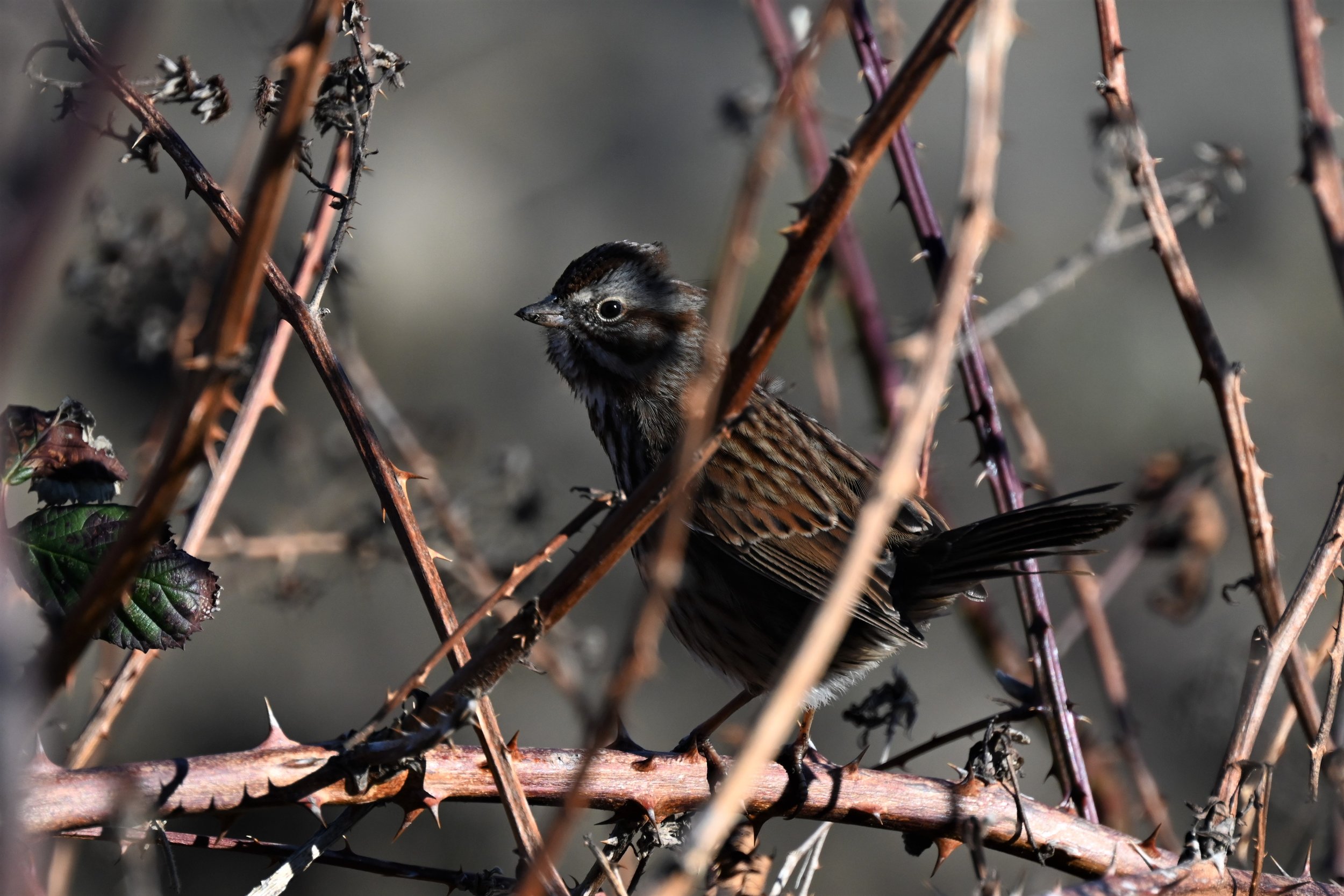GBBC 2024
For the past four days (Friday February 16th-Monday February 19th) one of the biggest, GLOBAL events for submitting bird data through community science efforts took place, and it is known as the Great Backyard Bird Count (GBBC).
If GBBC is new to you, let me explain.
Each February during a consecutive set of days, the Great Backyard Bird Count encourages community scientists, like you (yes—you!), to spend at least 15 minutes outside looking for, identifying, and counting birds. These sightings, when logged into an online database known as eBird, contribute vital data points that help to illustrate bird presence and possible absence in the area they are reported. When people from all around the world participate in counts and submit their data during the same time period, a larger picture of what’s going on with birds can be gleaned from these counts and observations. This gives scientists a better understanding of what may be happening with birds around the globe, and in turn, how to go about protecting them.
It’s truly just the nerd in me, but anytime I get to contribute sightings data, I’m in! It’s like a “where’s Waldo” turned beneficial for scientists and ornithologists that can’t be everywhere around the world, all at once! So, while I planned to contribute sightings from my own backyard, I also wanted to strike out into my proverbial backyard (Skagit county) and add to the data at some public access points (parks, trails, etc.). In thinking that part through, an idea came to me. Why not try to get the community involved with me? Especially those that might be new to birds, new to using eBird to report data, or both! The more confidence that people have in identifying, counting, and reporting birds, the more robust the data set will become (which benefits our feathered friends)!
So, over the course of four days, I completed some bird counts on my own, and after “collecting” some willing participants, I also had a group of 6 bird enthusiasts join me on Saturday the 17th at Northern State Recreational Area in Sedro-Woolley, WA. Mostly everyone who joined me has been out with me before (some for birds, some for whales, some for BOTH), and the group’s energy was palpable. We began by walking through the impressively intuitive eBird checklist app on everyone’s phone, and after making sure we all knew how to add numbers and species to our checklists, began our walk.
Northern State Rec was admittedly pretty quiet as far as bird variety goes, but we were able to eke out 16 species. Something I thoroughly enjoyed about this walk was that not all the birds that were accounted for were seen. Amateur birders in the group leaned into “birding by ear,” and as we continued to sweep the property, started hearing more bird calls and correctly identifying species through these means (hello, American Robins and Song Sparrows!). Those are leveled-up birding skills—and I was thoroughly impressed!
With the overcast day and a busy Saturday being enjoyed by many people and their pups and strollers, photo taking was also quite limited due to lighting challenges or the birds taking cover. But I do want to share a couple bird snaps along with these 6 intrepid adventurers enjoying their time as a community group while contributing to a community science initiative for the birds. It was a joy, and I hope you all enjoyed it, too!
Song Sparrow in the brambles
Golden-crowned Sparrow
American Crow pair
To see the complete eBird checklist from Saturday’s community event, click the link: eBird Checklist - 17 Feb 2024 - Northern State Recreation Area - 16 species
Total species logged over the course of all my GBBC efforts (57) :
Trumpeter Swan | *Whooper Swan | Canada Goose | American Wigeon | Mallard | Northern Pintail | Hooded Merganser | Green-winged Teal | Bufflehead | Common Goldeneye | Surf Scoter | Pigeon Guillemot | Greater Yellowlegs | Anna’s Hummingbird | Glaucous-winged Gull | Short-billed Gull | Common Loon | Pelagic Cormorant | American Bittern | Great Blue Heron | Northern Harrier | Cooper’s Hawk | Red-tailed Hawk | Merlin | Bald Eagle | Steller’s Jay | Belted Kingfisher | Northern Flicker | Red-breasted Sapsucker | Downy Woodpecker | Common Raven | American Crow | European Starling | Brewer’s Blackbird | Red-winged Blackbird | Western Meadowlark | Black-capped Chickadee | Chestnut-backed Chickadee | Bushtit | Ruby-crowned Kinglet | Golden-crowned Kinglet | Red-breasted Nuthatch | Brown Creeper | Fox Sparrow | Pacific Wren | Marsh Wren | Bewick’s Wren | Varied Thrush | American Robin | House Finch | Pine Siskin| Dark-eyed Junco | White-crowned Sparrow | Golden-crowned Sparrow | Song Sparrow | Spotted Towhee | Yellow-rumped Warbler
*Whooper Swan was reported in Skagit Valley and I re-found this rare visitor on Sunday! Photo below:
Whooper Swan — a rare visitor to Skagit Valley and is a vagrant species to North America; similar to Trumpeter and Tundra Swans, Whooper Swans occupy the tundra, taiga, and steppe throughout Russia and should be wintering on another continent! Notice the extensive yellow from just beneath the eye to the nostrils on the bill—one of the field markers for identifying this species.
All in all, a wonderful way to participate in the GBBC of 2024 and share a great cause with the community! Thank you to the small group that participated and I hope to see you back out on the bird trail soon!






